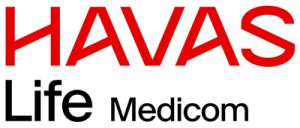Rare and Orphan Diseases
February 23, 2023 |
Why we need authentic and personalised communications in the evolving rare disease space. By Sarah Mikhailov, Managing Director, Brand at Havas Life Medicom
Working in healthcare communications is never boring – it’s about distilling complex science wrapped in emotive storytelling, creatively delivered to ultimately make people’s lives better. We also know that now, more than ever, there is a demand for authentic and personalised communications. And never more so than in the rare disease space.
There is no doubt the rare and orphan disease market is growing, driven not only by the Orphan Drug Act incentives, but by advances in genomic research, identification of new disease sub-types, and the use of technology and AI tools in research and treatment. In 2022, the FDA approved 37 new medicines – 61 less than the amount approved in 2018; however, the proportion of these new medicines that were drugs to treat rare diseases rose from 34% in 2018 to 54% in 2022,1. It’s also predicted that by 2026 orphan drugs will make up almost 1/3 of the global drug pipeline’s value.2
“Now, more than ever, there is a demand for authentic and personalised communications”
So, as we look to the future, we must reflect on what we have learnt from the past few years without losing sight of what matters most – the patient. Now, we’re all adjusting to near-constant change – hybrid working, people’s ever-increasing expectations, technology paving the way for immediate access to information, coupled with healthcare systems recovering from the back-log of patients, and many healthcare professionals at breaking point – this continues to make the med comms environment even more complex. But fundamentally, there continues to be two areas of critical focus in the rare disease space…
“Fundamentally, two critical areas of focus for Rare Disease communications are to support earlier identification and ensure an honest dialogue.”
The first is identification. Healthcare is becoming more advanced in terms of diagnostic tools, but it still suffers from the complexities of disparate and overwhelmed systems. That’s why support that ensures connectivity of care, referrals, specialist centres and more must be considered. We know that, on average, it can take up to four years to receive an accurate diagnosis of a rare disease3, we also know that not one size fits all in this space. Across the globe, every market is different – from demographics and disease prevalence to the systems themselves. Sure, as brand marketeers we will always strive to build a unique value proposition and our insights will inform a unified strategy, but implementation and delivery of campaigns need to focus on connectivity that works in market. All our rare disease programmes are designed with this in mind. They connect patients to the right HCPs, ensuring the ‘triggers’ are identified early, enabling those all-important discussions, and supporting differential diagnosis by connecting HCPs to the relevant information.
The second is getting personal. Speaking to people in the rare disease space necessitates being honest, true and compassionate. When you are talking about ‘named patients’ in each market and a handful of specialist centres, knowing your audiences makes a crucial difference. The principles from ‘ways to make friends and influence people’ remain true – we must build campaigns that are genuine, but more importantly, we have to listen, reflect and adapt – learning what works and what doesn’t. Something that massively helps is co-creation: partnerships with patient associations to align on the needs of their communities, understanding individual situations and empowering patient voices to enable change for others.
Any good marketeer will appreciate the fundamentals of communication, this is nothing new. We can all fall into the trap of buzzword bingo – authenticity, omnichannel, co-creation, hero’s journey, Ux, Vx, Cx (all the x’s) – but all of this is irrelevant without the balance of pragmatism to ensure that the efforts spent on gaining access are supplemented by a relevant brand story that reaches our target audiences. It’s also about developing something that’s going to affect change. And for this, you need people with a passion, who will find the right solution because they understand the operational structures and resources available – and, importantly, they have the vision to build plans with the future in mind.
As an agency leader I am acutely aware that our business is our people. And it’s not been an easy few years. We are all under increasing pressures – from recovering from a pandemic and adapting to new ways of working, to the cost-of-living crisis, we are learning and changing. And change is hard. I am immensely proud of all our teams here at HLM. Over the past 5 years we have worked on a number of rare disease campaigns, including patient identification and launch, to help reach patients who need support. The only way we have done this is remembering why we do what we do – we do it because we want to make a difference, because we are communicators, because we care.
I am constantly learning from my teams, colleagues and clients, and I cannot wait to see what the future holds as we commit to making a difference for people with rare diseases.
“Remembering why we do what we do – we do it because we want to make a difference, because we are communicators, because we care.”
References:
- Mireku, A. (2023) ‘Can the FDA keep the momentum going for rare disease drug approvals?’ Pharmaceutical Technology. Available at: https://info.evaluate.com/rs/607-YGS-364/images/Evaluate%20Orphan%20Drug%20Report.pdf (Date accessed: January 2023).
- Hadjivasiliou, A. and Senior, M. ‘Evaluate Orphan Drug Report 2022’. Available at: https://info.evaluate.com/rs/607-YGS 364/images/Evaluate%20Orphan%20Drug%20Report.pdf (Date accessed: January 2023).
- https://www.raredisease.org.uk/wp-content/uploads/sites/7/2019/02/Illuminating-the-rare-reality-2019.pdf
This content was provided by Havas Life Medicom





